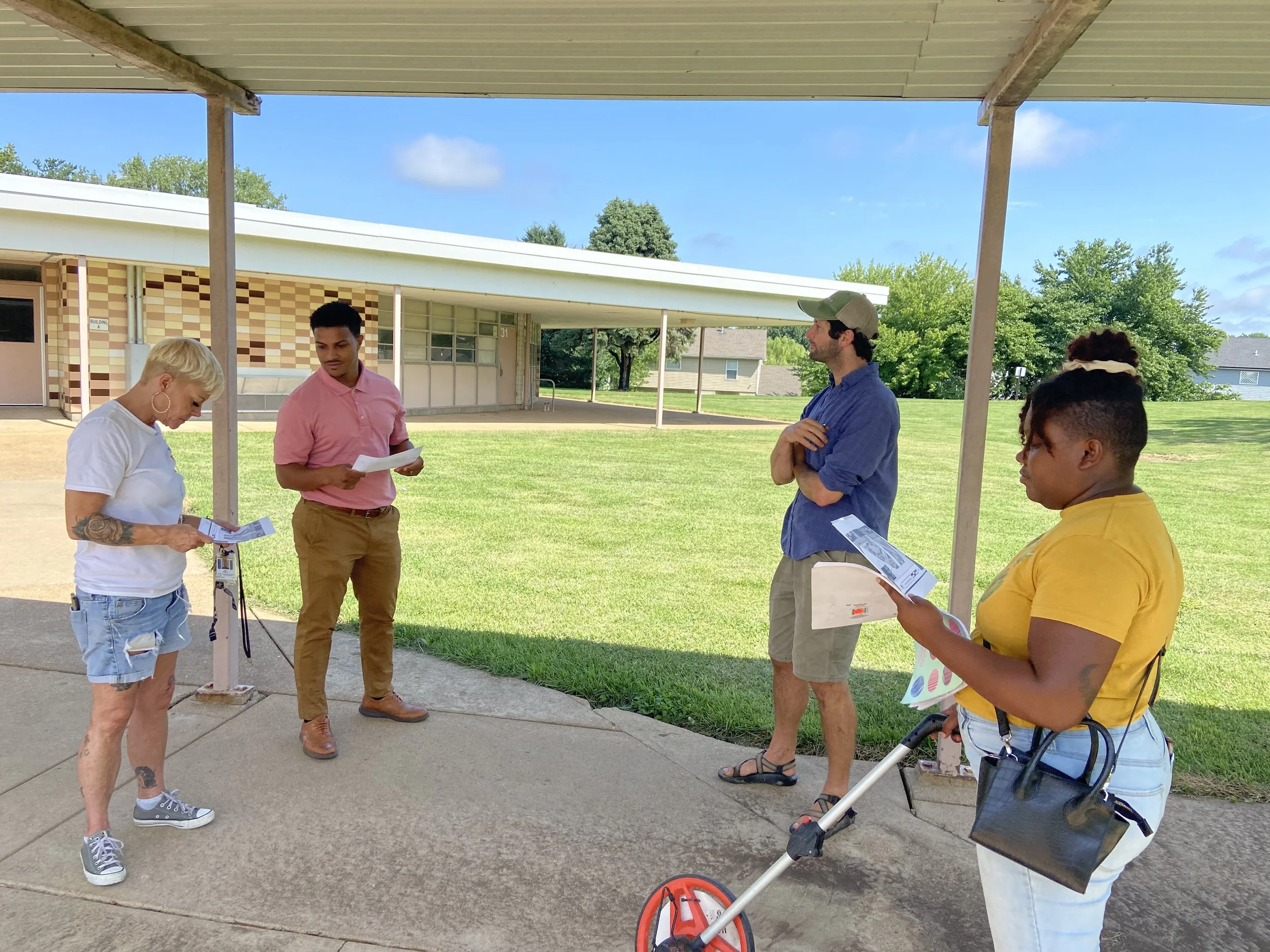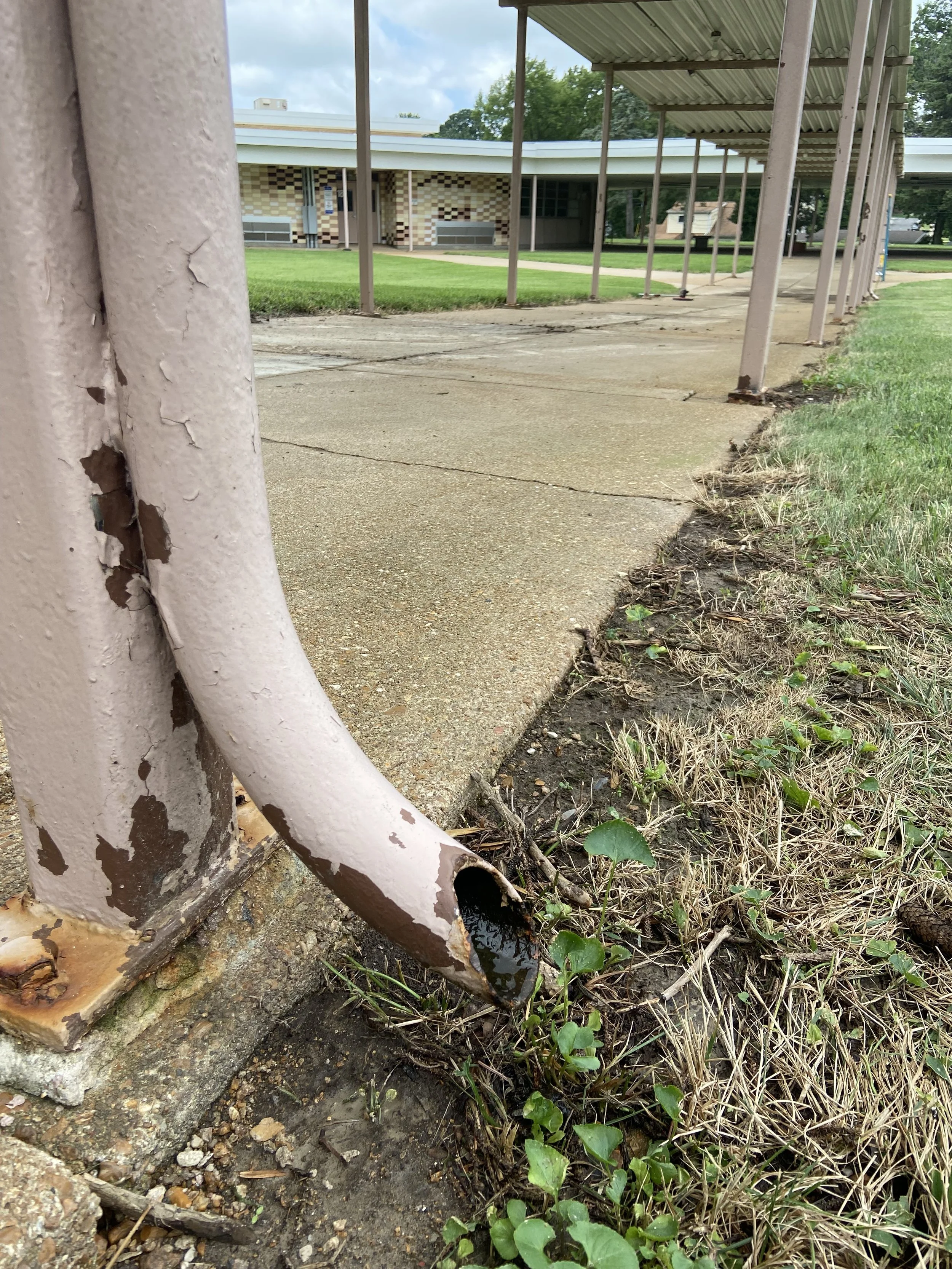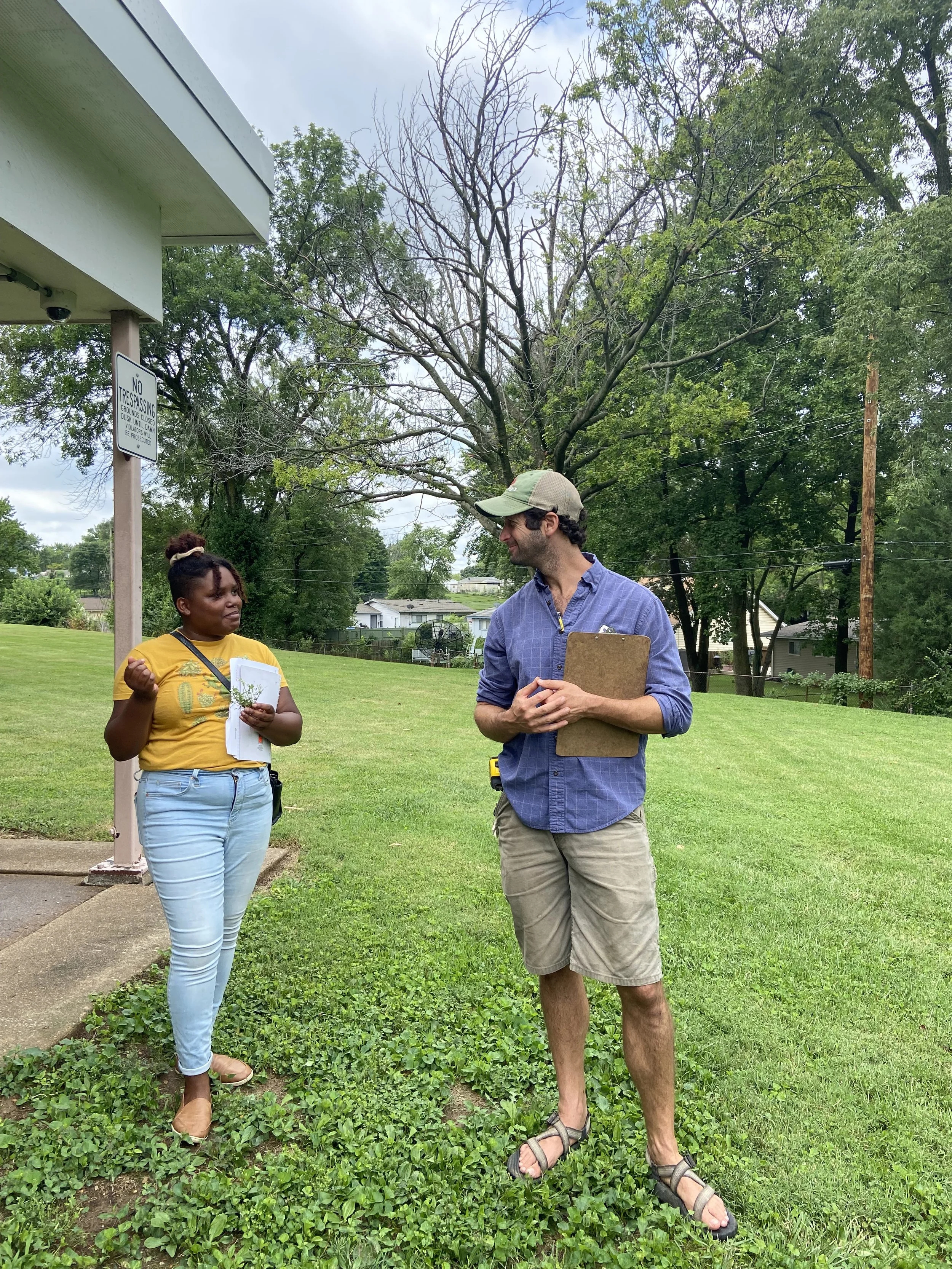August Happenings at Restoration & Wellness
Right to left: Valaree Logan, Matt Lebon, Isaiah Melendez, Pam Williams
Our team took another step toward realizing the vision of the Permaculture Project of Metropolitan St. Louis earlier this August when we all gathered on the Restoration and Wellness campus in the Ferguson-Florissant School District. We came together with plans in hand, just days after tremendous rainfall and flash flooding in St. Louis made international news. Our plan was to discuss the garden design prepared by Custom Foodscaping founder Matt Lebon with input from the whole team, including Valaree Logan, Project Lab St. Louis’ lead gardener and school liaison, Isaiah Melendez, Principal of Restoration, and Pam Williams, lead caretaker on campus. Facing the reality of climate change head-on, our conversation began and ended on the subject of water.
After the rains, the area of our proposed garden and the main path across the quad had accumulated standing water (Pam Williams caught the image above when she returned to school). The existing downspout was perhaps overwhelmed by the sheer volume of water. Together, with Matt’s guidance, we thought through our options to alleviate pressure on the system: building a berm, digging a swale, placing rain-collecting tanks, moving the drainpipe — it was a free-flowing session focussed on engineering a sustainable solution. At the same time, it inspired us to consider all the engaging curriculum and project-based learning that will emerge from our attempts to address this real-world problem. Students will be exploring the water cycle, hydraulics, engineering, landscape design, and the effects of climate change even before tending their first plant!
Of course we also talked plants! How to safely and gradually get rid of the ones we don’t want — Bermuda grass and nutsedge. How to recognize and taste the edible plants already growing in the lawn — wood sorrel, violets, wild strawberries, lamb’s quarters, purslane. How to make nourishing homes for the ones we do want — lavender, bee balm, thyme, sage, lemon balm, basil, lamb’s ear, rosemary, raspberries, mints of all kinds, (including chocolate mint), currants, hot peppers. How to decide which flowers will attract the native pollinators — specifically bumble bees — we’re hoping to attract as part of the research we’re undertaking under the auspices of the Smithsonian’s National Museum of Natural History — sunflowers, coneflowers, prairie clover, white aster, goldenrod.
It was an inspiring morning, and we’re all excited for next steps. Students return to school on Monday, August 22, and when they do, they will take part in these ongoing conversations, all of which align so beautifully with our mission to enrich and invigorate public school curriculum with meaningful experiences that relate to students’ everyday lives. I’m so grateful to everyone who’s been working so hard for so long to bring us to this point. In Ferguson-Florissant, we are especially grateful to Isaiah Melendez, Pam Williams, and Eric Hadley. Heartfelt thanks, too, to our partners at the Smithsonian in Washington, D.C., Carla Easter, Robert Costello, and Gary Krupnick, for their ongoing support and encouragement.




